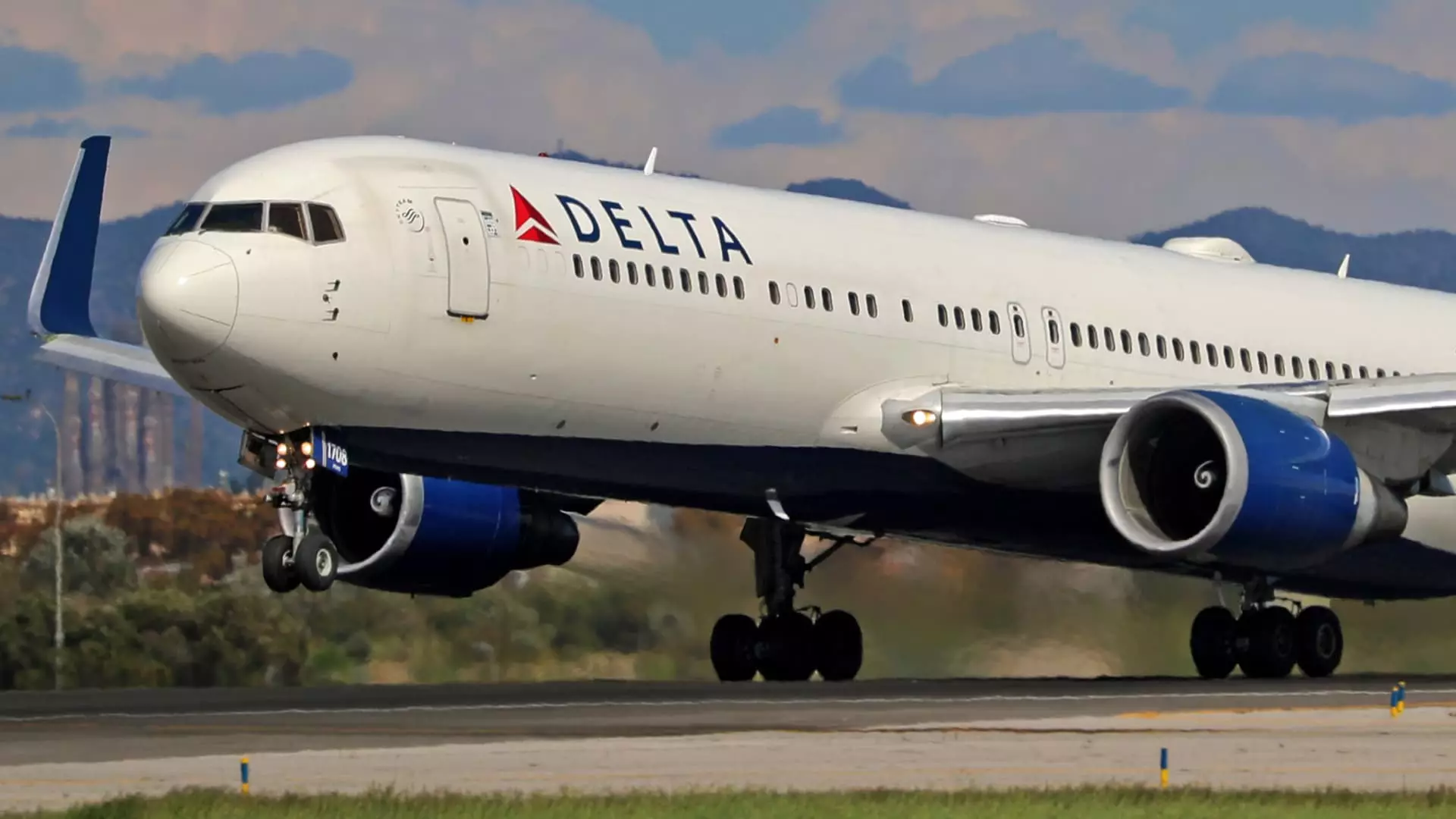The airline industry, once heralded as a phoenix rising from the ashes of the pandemic, is now showing signs of significant distress. Reports suggest that travel demand from crucial markets, particularly Canada and Europe, is waning. This deterioration reflects broader economic apprehensions and consumer sentiment that, while buoyant at the tail end of the pandemic, is now trapped in a cycle of uncertainty. Analysts anticipate that major U.S. carriers will revise down their earnings forecasts significantly as the volatile landscape continues to morph.
The recent actions of Delta Air Lines exemplify this troubling trend. The airline recently adjusted its first-quarter forecasts downward, indicating weaker-than-expected corporate travel and leisure bookings. Such caution is echoed across the industry, with American Airlines and Southwest Airlines also taking steps to curb their optimistic expectations for early 2025. These moves symbolize not just a reaction to immediate concerns but a recognition of a profound shift in the travel market, one that is eerily reminiscent of the early pandemic days — a time when border closures and travel bans paralyzed the industry.
The Impact of Political Decisions on the Market
Many analysts trace the fallout to a broader array of challenges, including mass government layoffs and increased tariffs on imports, leading to a tightening of belts among American consumers. These decisions not only destabilize financial markets but also rewrite the rules for sectors that rely on consumer spending, including travel. In a landscape shaped by President Trump’s policies, the imposition of global tariffs at rates of 10% and above have created headwinds for airlines that were enjoying a post-pandemic revival.
The stock market has reacted passionately to these developments, suffering the worst downturn since 2020. This turbulence is evidenced by staggering declines in the stock prices of major airlines. As of 2025, Delta’s stock plummeted over 38%, while American Airlines and United Airlines witnessed declines exceeding 45% and 40%, respectively. The once-reliable sentiment that saw consumers investing in travel experiences has seemingly evaporated, prompting industry players to reevaluate their strategies amidst increasing pessimism.
Changing Consumer Behavior: A Shift in Priorities
What was once seen as irrepressible demand for international travel is now under scrutiny as new economic realities emerge. Data from aviation analytics firm Cirium lays bare a sobering statistic: year-over-year bookings between the U.S. and Europe are down by 13% for the peak summer months of June through August. While some might point to factors like inclement weather or late holiday seasons, the underlying trend is clear—consumers are pulling back.
Adding to this is an emerging culture of caution around discretionary spending, particularly among Baby Boomers who traditionally prioritize travel. The reverberations of inflation and economic isolationism are dampening overall consumption patterns. According to the Bank of America Institute, this reduction in consumer confidence has led to hesitancy in travel bookings, revealing a psychological shift where experience-driven spending is now questioning the once-unchallenged priority it held in people’s lives.
The Silent Squeeze: Premium Travel at Risk?
While budget-conscious travelers seem to be scaling back, the segment of high-income consumers that has shielded airlines from the worst of the downturn could soon feel the pressure, too. Analysts provide mixed conclusions on the sustainability of premium travel demand. The allure of luxurious travel experiences remains, yet industry insiders are warned that a “full cabin” does not guarantee financial stability. What is at stake is not merely occupancy rates, but the overall profitability of offerings tailored to affluent travelers.
As airlines brace for tough discussions during the earnings calls, a critical question emerges: Can airlines stimulate demand effectively, perhaps through enticing frequent flyer points or strategically relaxing seat pricing? While the premium cabins may remain busy, the question of profitability looms large. Are airlines prepared for a potential downturn that could turn their lucrative routes into just another struggle to fill seats?
In essence, the commercial aviation landscape is increasingly fraught with challenges that airlines must navigate meticulously. The conundrum of sustaining demand while wrestling with external economic pressures manifests itself as a tightrope walk between taming costs and enticing travelers who are now reticent about their next trip. The world may no longer be a place where travel is a foregone conclusion; it may soon be a luxury few can justify maintaining.

Leave a Reply